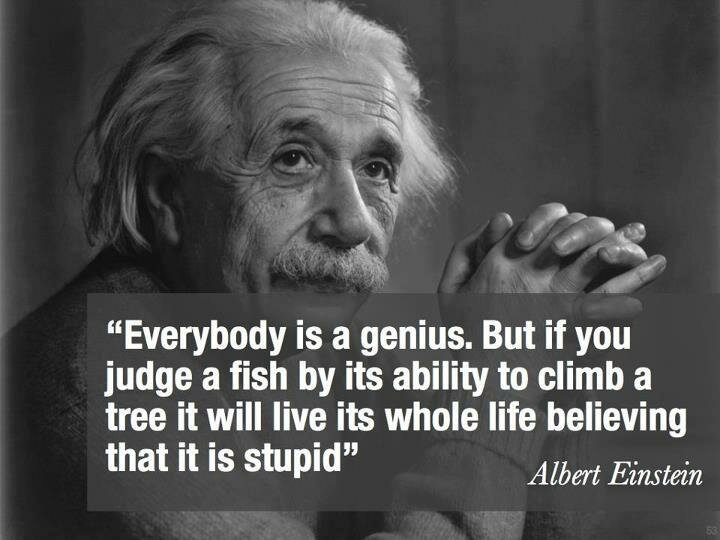The word "social technology" is a bit of a contradiction. Social technologies connect us like never before, but at the same time the superficiality of our social world, and our isolation, seem greater then ever. We are embarrassed by the rich emptiness of our world. Then again, maybe all you need to do to make rich connections is pick up a copy of BF3 where we can experience rich, genderless, race-less, class-less connections with others. It may nor be idea, but the contradictory and confusing brave new world of social technology is definitely something to think about.
by By Alexander Sereda.
For Athabasca University Sociology 460
I’ve always had a close relationship with technology. I became enamoured with the possibilities of technology at a very young age, at about the same time that I watched my first Star Wars movie, in fact. This fascination with the world of tomorrow shaped my life continuously, and the overarching vision of improving the world with technology has been a deep-seated calling. Yet as a result of this familiarity, it has always been clear to me that innovation and invention are not solutions. They are tools which, when wielded correctly, can accomplish both wonderful and terrible. In either case, change is a perilous process and every improvement has a price of some kind. Nowhere have I found this to be truer than the manner in which technology has affected human social interaction; I am just old enough to remember the introduction of the internet and the way in which emails and IMs and eventually social media supplanted other forms of social activity.
It has been my experience that technology has the tendency to create social isolation. I understood this outcome when I considered how many of our relationships are actually the result of necessity, rather than desire. For instance, in school we interact and socialize with dozens and dozens of other students, as well as with teachers, coaches, and other staff. As adults, we know our co-workers and bosses, the man at the hot-dog stand outside the place where we work, or the person who rides the morning train with us. These myriad social connections enrich our lives, and they form the foundation of an existence in which we know we are not alone. It is an extended community that is forced upon us by circumstance and which grounds us in an inescapable social reality. Yet unless someone moves around a lot, as I did, it’s hard to understand how truly fragile these connections actually are; when we graduate high school, it is rare that we stay in touch with more a handful of friends or teachers. After changing jobs, it is uncommon to maintain a relationship with all of our co-workers and casual acquaintances. These kinds of connections simply fade away. In the past, these connections were replaced by similar connections at our new school or job, but when ICTs are brought into the mix this may not always occur.
ICTs allow for incredibly efficiency and unlimited reach in communication and socialization, but in surmounting such obstacles as lunch hours, physical offices, and the need for commutes, it removes the necessities that sustain these networks of continuous interpersonal relationships. Maintaining a social relationship of any kind requires an investment of time and energy, and people generally don’t exert themselves unnecessarily. Technology creates a world where such networks of connections are unnecessary, and therefore are not created. The net result is that ICTs seem to lead to a quantitative reduction in the number of communal social connections.
The rejoinder to the above claim is obvious: ICTs create more digital social connections than the number of physical social connections they do away with. This is arguably true, but the when the quality of these new digital connections is assessed, it is difficult to be so optimistic. For myself, I have my dozens of high-school friend on Facebook, but our exchanges are fairly impersonal. We “like” each other’s statuses, or leave a witty comment on a photo, but these digital interactions simply lack the bandwidth to sustain any kind of meaningful discourse or exchange. Certainly such relationships pale in comparison to eating lunch together or playing sports. Texting provides a useful example. Today, these little textual snippets have by and large replaced phone calls. They are certainly a more flexible and efficient method of communicating than actually speaking, but texting has unquestionably reduced the amount of time I spend interfacing with a human being. Professionally, I have dozens and dozens of co-workers and contacts on Skype, but we rarely speak. I’ve never met many of them, and likely never will. In fact, I’ve never even spoken to several; IM’ing is more efficient, so we just never bother to call. Pulling an all-nighter with coworkers at the office, commiserating over bad coffee and unreasonable deadlines unquestionably forges a kind of bond. Doing so online, trading comments by IM, simply does not have the same effect.
While I can’t debate the efficiency of managing your friendships with Facebook, or coordinating projects via email and Skype, the actual experience of doing so is unsatisfying on an emotional and deeply primal level. The more I have come to rely on technology in my life, the more difficult I have found it to remain meaningfully connected to other people. It is certainly still possible to do, but it requires a special effort. Or perhaps more accurately, technology has made the barest essentials of social intercourse, information exchange, so easy that socializing in a tradition manner becomes difficult and dull in comparison.
It is my opinion that that trouble with email, IM, text messages, and even phone calls, is that they are essentially stateless, context-less interactions. This is a critical point. The human being is a social animal, and our interactions include significant complexity simple text cannot convey. We have facial expressions, vocal inflections and cadence, body language, and even pheromones that operate as separate side-channels, enriching our interactions with contextual data. Furthermore, the very environment in which we interact also plays a significant role. One can trade ideas at a crowded bar, chat casually on the subway, present an idea in the conference room or in a private office. We might mention something just before the end of the day, or first thing in the morning. Often these temporal, spatial, and contextual aspects are intentional and highly charged with meaning, but digital communication as it currently exists largely strips all this away. I may send an email first thing in the morning, while on my way to work, but the recipient might not sit down to read it until the weekend. In personal spheres of life, this kind of disconnect has even more profound consequences. Phone calls retain the temporal and vocal contexts, at least, and video calls manage to include visual channels like facial expressions and a modicum of body language and physical setting on top of that. The trouble is that these modes of communication are generally avoided because they are viewed as being so inefficient and inconvenient. In short, socially and especially professionally, we have embraced convenience at the expense of context and immediacy, and the overall quality of our social interactions suffers for it.
On the face of things, the situation appears fairly grim, but I do not believe that we are destined to become a society of totally networked and utterly disconnected human beings. I feel that these issues are largely a transitional issue, a symptom of a society undergoing a painful metamorphosis. One reason for my optimism is my experience with simulation, by which I mean the creation and population of virtual spaces, in which people may act and interact via simulacra. However, before I proceed, it is of upmost importance that the reader disregards what they may have been told by video game developers and technological evangelists. Simulation is a technology in its infancy. The hardware to support practical, affordable, and omnipresent simulation does not exist, and even the casual observer can see that software tends to lag behind hardware. Consider that the development of general computing is only now being realized in software with mass appeal, decades after it was possible for hobbyists and professional. A similar situation exists for simulation, and it will no doubt be decades yet before simulation becomes widely used. My claim is bold, but it is one which I stand by: simulated realities will one day replace the bare and primitive existing methods of digital communication.
I have always been an avid gamer. Even before my family had a computer, I would spend hours in the homes of more fortunate friends, playing on their Nintendo 64s or wheedling some time with a GameBoy Color. I found computer games absolutely compelling. To my mind there was nothing more fascinating than the responsive interactivity of a first-person shooter, or the epic scale of a real-time strategy game. The grand battles and dramatic narratives I played out in my head actually came to life on the computer screen, and these forms were entertainment were absolutely intoxicating. It was not until I was in high school that I finally got my own computer, and since then I have participated fully in gaming culture, and I find it to be one of the areas of technology that I am most optimistic about. It is my firm belief that computers and networks can be combined with the narrative and visual arts to create a novel kind of cultural space, one with the capacity to fundamentally alter the way in which we interact as a community. More specifically, I have seen how individuals self-assemble inside virtual worlds, forming communities and relationships that are just as strong as the ones that exist in real life. I have personally seen and experienced that when you provide a person with a virtual avatar and set them free in a virtual world, something very real occurs. Friendships grow and communication happens, but the virtual world and its simulated contents adds a contextual richness that makes these virtual connections nearly as real and just as meaningful as they are in real life.
To explore this idea further, I will provide some examples from actual games. These games are usually online, multiplayer games, though there are a few single-player, offline games that are worth mentioning.
Battlefield 3 is a simulation of modern warfare. One hundred and twenty-eight people, armed with all of the tools of today’s military forces, face off in open environments often several square kilometers in size. Players fly helicopters and jets, pilot tanks, or crawl through underbrush on their bellies as they attempt to defeat the enemies and seize control of objectives. Another example that is worth mentioning is World of Warcraft, a fully persistent online world which has evolved over the span of almost a decade into a fascinating, self-contained society. Players will group together into little communities that persist for years, and spend enormous amounts of time together, socializing, working, and playing. A third example is Eve Online, a futuristic game in which hundreds of thousands of players build, scheme, and strategize for riches and power. They swear allegiance to and share resources in small corporations and grand alliances, fighting for survival and supremacy.
As in real life, coordination and communication is essential, and groups of players will often solidify into teams, spending countless hours socializing or honing their strategies and skills. The games are designed to encourage teamwork, providing incentives for people think and act as community, rather than free, uncommitted actors. Being anti-social or unreliable is just as much a disadvantage in these worlds as it is in real life, while being friendly or considerate is a huge asset. Many same qualities and skills which make a person socially and professionally successful in real life will yield equally significant benefits in these virtual communities. It is critical that one does not dismiss these games as mere, frivolous leisure. It is true that they are shallow, and often materialistic and simplistic, but the key is to look past particular implementation and examine the nature of the technology. There is something compelling about these environments, some set of characteristics that inspires and stimulates people to form lasting relationships and integrated communities.
While my experience is not all encompassing, I can say with certainty that the bonds that form between teammates in these virtual spaces are quite powerful, a product of shared effort and adversity, based on mutual trust and respect. In comparison to social connections formed at school or in the workplace, the virtual networks are often equally meaningful and equally rich. They fall short in some aspects, but surpass real relationships in others. For example, it is much less common for a real-world community to become stratified along artificial lines like wealth, class, or physical appearance. On the other hand, building significant connections in the virtual world can take much longer.
It is crucial to understand that these are crude, first attempts to do something useful with simulated reality, the product of an immature entertainment-based industry trying desperately to eke out a profit with socially marginalized products. Recall that the last few years are the first time in history when an adult game-playing demographic has even existed. The adult game is a brand-new concept, and it will take time for the technology being utilized to mature and spread to other applications.
I suspect that there will come a time when people meet and socialize in virtual, rather than physical spaces. I suspect that workplaces will also become virtual, allowing resources like shared files or remote printers to be accessed as actual objects, rather than through the current, obtuse interfaces. Our society already does much of this, but through convention and technology limitations we remain bound to an unnatural and unintuitive two-dimensional interface. The dominant interface method today was designed almost thirty years ago for machines of such limited capacity that they can barely be imagined by today’s programmers and designers. It does not seem such a stretch to think that many activities we perform on computers will eventually be through an interaction metaphor that is more closely based on the actual human experience of reality.
It is here, in the realm of simulation, that I see the seeds of a new kind of social society. Technology will continue to push human activity out of the physical world, and into the digital realm. Yet we are inseparably placed in physical bodies and it is inevitable that we will bring our physicality with us. Simulation is how we can transform the digital realm from something cold and mechanistic into a living, aesthetically rich space. It is in such a space that we can again develop the rich webs of social connections that act as the underlying fabric of society.
There is another very simple, very powerful, way of conveying my point. Consider the following:
🙂
Contemplate the implication of those two symbols, the implications of what they mean. Human beings, using only the crudest, coldest, most possible means of information input and transfer possible, found a way to bring faces into a digital space. As the nature and methods of digital communication and socialization become less and less primitive, I have no doubt that people will manage something better than a colon and a parenthesis.
 The Socjourn A New Media Journal of Sociology and Society
The Socjourn A New Media Journal of Sociology and Society



“Technology will continue to push human activity out of the physical world, and into the digital realm. Yet we are inseparably placed in physical bodies and it is inevitable that we will bring our physicality with us. Simulation is how we can transform the digital realm from something cold and mechanistic into a living, aesthetically rich space. It is in such a space that we can again develop the rich webs of social connections that act as the underlying fabric of society.”
Exactly. This reminds me of a couple times while in Yoga class, where the instructor softly touched my shoulders or gently pulled my legs while in a pose. The physical human touch alone seemed to have opened a doorway or seemed to have stimulated the right nerves to bring about a sense of extreme peacefulness.
I do not think that it is so sure that using virtual avatars will be a thing everyone does in the future. You said yourself that although the possibility is there to use phone calls rather than text messages people tend to use the less personal one. There is a reason for that. I believe that many people enjoy today’s virtual communities exactly because they are much easier to handle than “in person” relationships. I personally cannot stand small talk (especially not the Hungarian type I have to live with which is mostly about what you did the last day…) You can understand that there are ups and downs in personal relationships and maybe people enjoy getting information about each other without having to smile (oh poor Americans… 😀 ) and talk for minutes just to get a single piece of information.
So all in all I believe that there will be a way of virtual communication in which expressing emotions and meta-communication is totally possible and it might get widespread, however I am not sure that majority of the people would want to use it…